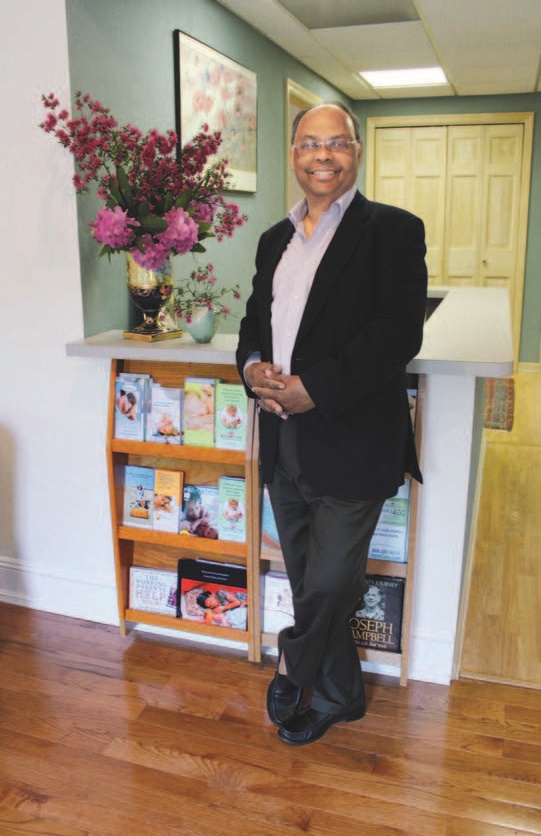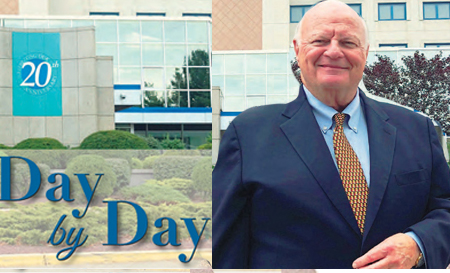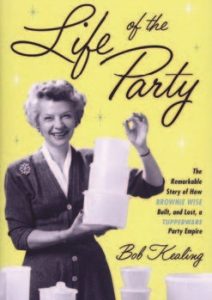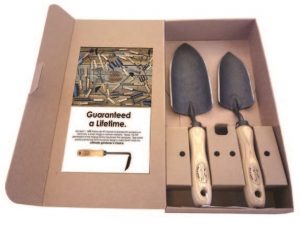Entertainment on the Edge
On Tap This Autumn
Saturday • September 21 • 7:30 pm Sunday • September 22 • 3:00 pm
Kean Stage Art Garfunkel In Close-Up
The Rock n Roll Hall of Famer celebrates his 10th year at Enlow Recital Hall.
September 26 – October 27
Paper Mill Playhouse
Chasing Rainbows The Road to Oz
A musical telling of how Frances Gumm became Judy Garland, from her days as a vaudeville child star to her career at MGM. Check website for show schedule.
Friday • September 27 7:00 pm
Prudential Center
Heart Love Alive Tour
The original chart-topping female rock duo comes to New Jersey with their first tour in three years—joined by Joan Jett and the Blackhearts.
Saturday • September 28 8:00 pm
Prudential Center J
uan Luis Guerra Literal Tour
Grammy winning singer-songwriter Juan Luis Guerra and his band 4.40 stop at The Rock to debut their new studio album and perform their greatest hits.
Sunday • September 29 3:00 pm
NJPAC/Prudential Hall
Arlo Guthrie Alice’s Restaurant
The folk music hero returns to the Garden State for a concert celebrating the 50th anniversary of the silver-screen version of Alice’s Restaurant. The film starred Guthrie and was directed by Arthur Penn.
Sunday • October 6 • 7:30 pm
Prudential Center
Hugh Jackman The Man. The Music. The Show.
The multitalented Tony-winning performer has mounted his first world tour, featuring songs from The Greatest Showman and other Broadway musicals.
Saturday • October 12 8:00 pm
NJPAC/Prudential Hall
Temptations & Four Tops Live On Stage
Two of history’s most iconic R&B groups join forces in Brick City. The Temptations have seven Grammys to their credit, while the Four Tops scored two dozen Top 40 hits. Both groups have been enshrined in the Rock and Roll Hall of Fame.
Friday • October 18 • 7:30 pm
Kean Stage
Vienna Boys Choir
The VBC was founded in the 15th century, making it one of the oldest singing groups on the planet. The Kean Stage appearance features one of the choir’s four touring groups, made up of altos and sopranos ages 9 to 14.
Saturday • October 19 6:00 & 8:30 pm
NJPAC/Chase Room
Will and Anthony Nunziata Disney and The Boys
The acclaimed duo take a magical ride through the music of the Sherman Brothers (aka The Boys), whose movie scores include Mary Poppins, Aladdin and The Little Mermaid.
Saturday • October 19 8:00 pm
NJPAC/Victoria Theater Soulshine
The Allman Brothers Experience
Six gifted musicians recreate a classic concert along with stunning video and lighting. Soulshine covers all the favorites, as well as songs played by Duane Allman before he joined the band.
Saturday • October 26 • 8:00 pm
NJPAC/Victoria Theater
Tusk Live On Stage
The ultimate Fleetwood Mac tribute band performs the group’s greatest hits.
Sunday • October 27 • 3:00 pm
Kean Stage
Led Zeppelin II Classic Albums Live
Relive the band’s signature disc 50 years later with a group of talented musicians.
Sunday • October 27 • 7:00 pm
Prudential Center
Bad Bunny X 100Pre Tour
“King of Trap” Bad Bunny hits the stage in Newark with a high-voltage stage show, accompanied by some of the top stars of Latino rap and hip hop.
Sunday • October 27 • 3:00 pm
NJPAC/Prudential Hall
Munich Philharmonic Emperor Concerto
Valery Gergiev conducts and Behzod Abduraimov performs Beethoven’s Piano Concerto No. 5 as guest soloist. Gergiev, a champion of Russian composers, served as principal conductor of the London Symphony Orchestra.
Saturday • November 2 • 7:00 pm
State Theatre
Chubby Checker & Friends Rock and Roll Spectacular
Chubby Checker and The Wildcats headlines a raucous revue that includes The Duprees, The Capris and The Tokens.
Friday • November 8 8:00 pm
NJPAC/Prudential Hall
Mandy Patinkin Diaries
Accompanied by Adam Ben-David, Broadway legend Mandy Patinkin performs songs by Stephen Sondheim, Harry Chapin, Rufus Wainwright and others.
Friday • November 8 • 8:00 pm
Saturday • November 9 • 2:00 & 8:00 pm
Sunday • November 10 • 2:00 pm
State Theatre
Beautiful The Carole King Musical
The hit Broadway show traces Carole King’s journey from struggling songwriter to Rock and Roll Hall of Famer.
Thursday • November 14 7:00 pm
NJPAC/Victoria Theater
Nimbus Dance Falling Sky
The innovative Jersey City dance troupe debuts Samuel Pott’s Falling Sky, set to a score by Qasim Naqvi. The evening of music and dance represents a bold collaboration between Nimbus, NJPAC and the NJ Symphony.
Thursday • November 14 8:00 pm
NJPAC/Prudential Hall
Chaka Kahn Live On Stage
The 10-time Grammy winner pioneered the fusion of funk and soul across a career that has spanned more than four decades. She is touring in support of her new album, Hello Happiness—her first in a dozen years.
November 15 – November 23
Kean Stage
Sunday In the Park with George
Stephen Sondheim and James Lapine’s smash Broadway hit comes to Kean Stage for eight performances. Check website for dates and times.
FOR THE KIDS
Sunday • September 22 11:00 & 2:00 pm
State Theatre
Jason Bishop Straight Up Magic
The master of double levitation performs his over-the-top illusions and close-up sleights of hand with help from lead assistant Kim Hess.
Friday • October 4 • 6:00 pm
Saturday • October 5 10:30 am, 2:00 & 5:30 pm
Sunday • October 6 10:30 am & 2:00 pm
NJPAC/Prudential Hall
Sesame Street Live Make Your Magic
Join Elmo and friends as they welcome magician extraordinaire Justin.
Saturday • October 26 2:00 & 7:30 pm
NJPAC/Prudential Hall
New Jersey Symphony Orchestra
Harry Potter and the Half-Blood Prince
The NJSO performs the score of sixth Harry Potter film live as it plays on the big screen.
Saturday • October 26 11:00 am
NJPAC/Victoria Theater Terra Theater
The Little Mermaid
Hans Christian Anderson’s beloved tale is brought to life by a team of master stage performers and puppeteers.
November 6 – 10
Prudential Center
Disney On Ice Road Trip Adventures
Anna, Elsa, Olaf, Mickey, Minnie and friends take young fans on a wild ride around the world.
IT’S SO FUNNY
Friday • October 4 • 8:00 pm
NJPAC/Victoria Theater
Nemr The Future Is Now
Lebanese-American standup Nemr Abou Nassar makes his New Jersey debut in the Victoria Theater. Nemr is coming off his sold-out Love Isn’t the Answer world tour.
Saturday • October 12 7:00 & 9:30 pm
NJPAC/Victoria Theater
Mike Marino & John Bramnick Live On Stage
Marino’s take on Italian-American culture has made him the bad boy of New Jersey comedy. He is joined by lawyer/comic Jon Bramnick. Check out Kike’s musings in Stand Up Guy on page 82
Saturday • October 19 • 8:00 pm
Sunday • October 20 • 7:30 pm
NJPAC/Prudential Hall
Jo Koy Live On Stage
Few comics are hotter right now than Filipino-American standup Jo Koy, whose rise from coffee houses to sold-out concerts and Netflix specials is one of the great stories in the business. His “overnight” success only took 25 years!
Friday • October 25 • 8:00 pm
State Theatre
Carol Burnett An Evening of Laughter & Reflection
The beloved comic actress relives her greatest moments, shows video clips and (of course!) takes audience questions
.
Friday • November 1 • 7:30 pm
State Theatre
Randy Rainbow Live On Stage
Satirist Randy Rainbow comes to New Brunswick for a wild evening of spoofs, parodies and scenery-chewing.
Saturday • November 2 • 8:00 pm
NJPAC/Prudential Hall
Franco Escamilla Payaso
Mexican-born comic performer and YouTube star Franco Escamilla comes to Newark with his new tour, Payaso (Clowns).
Friday • November 8 • 8:00 pm
Saturday • November 9 2:00 & 8:00 pm
NJPAC/Victoria Theater
Eli Castro Made in Puerto Rico
Standup Eli Castro takes a funny, loving look at “Spanglish” culture.
TALKING POINTS
Thursday • October 10 • 8:00 pm
NJPAC/Prudential Hall
John Kerry A Conversation
Former Secretary of State John Kerry takes part in the New Jersey Speaker Series, presented by Fairleigh Dickinson University. Prior to his service in the Obama administration, Kerry spent three decades in the Senate.
Thursday • October 24 • 8:00 pm
NJPAC/Prudential Hall
Zanny Minton Beddoes Conversations
The editor in chief of The Economist takes the Prudential Hall Stage as part of the New Jersey Speaker Series.
TOTALLY JAZZED
Wednesday • November 6 8:00 pm
State Theatre
James Carter, James Francies & Kandace Springs Blue Note 80th Anniversary
Three of the top names in contemporary jazz present an intimate evening honoring Blue Note’s decades-long heritage of cool jazz.
Friday • November 15 • 7:00 pm
NJPAC/Chase Room NJMEA All-State Jazz with Steve Turre Live On Stage
A new generation of jazz artists share the Chase Room stage, led by innovator/educator Steve Turre.
Friday • November 15 • 7:30 pm
NJPAC/Victoria Theater
After Midnight The Music of the King Cole Trio
This year marks what would have been Nat King Cole’s 100th birthday. After Midnight celebrates his legacy and focuses on his work in the 1940s as a trend-setting pianist.
Friday • November 15 • 8:00 pm
NJPAC/Prudential Hall
Spyro Gyra, Steps Ahead & Michael Franks Live On Stage
Three jazz-fusion hit-makers share the big stage at NJPAC as part of the James Moody Jazz Festival.
Saturday • November 16 8:00 pm
NJPAC/Prudential Hall
The Roots with A Christian McBride Situation Live On Stage
The Tonight Show house band joins forces with Christian McBride’s experimental ensemble for an evening of jazz, funk, R&B and hip hop.
Thursday • November 21 • 7:30 pm
NJPAC/Victoria Theater
Lee Ritenour with Dave Grusin & Friends Live On Stage
Jazz guitarist Lee Ritenour and pianist Dave Grusin perform as part of the James Moody Jazz Festival.
Editor’s Note: For more info on these listings log onto the following web sites:
Kean Stage • keanstage.com
NJPAC • njpac.org
Paper Mill Playhouse • papermill.org
Prudential Center • prucenter.com
State Theatre • stnj.org




 The fact is that 2009 was a big year for auto tech. Many of the now ”standard” features on 2019 vehicles were just finding their way into showrooms back then. Among the groundbreaking bells and whistles were rear-mounted radar that could detect oncoming traffic when a car shifted into reverse, as well as portable routers that turned vehicles into Wi-Fi hotspots. Live GPS vehicle tracking (for paranoid parents or vigilant business owners) also became widely available. And smaller, lighter turbocharged engines could be found in cars across the MSRP spectrum, boosting power and efficiency—a huge game-changer.
The fact is that 2009 was a big year for auto tech. Many of the now ”standard” features on 2019 vehicles were just finding their way into showrooms back then. Among the groundbreaking bells and whistles were rear-mounted radar that could detect oncoming traffic when a car shifted into reverse, as well as portable routers that turned vehicles into Wi-Fi hotspots. Live GPS vehicle tracking (for paranoid parents or vigilant business owners) also became widely available. And smaller, lighter turbocharged engines could be found in cars across the MSRP spectrum, boosting power and efficiency—a huge game-changer. 3-D Printed Cars. Not the whole car, of course, just the parts that make people ooh and aah. Pick your engine and your options, and then go crazy designing the car of your dreams. The functional technology exists already, however, the cost is still prohibitive. But man, just think of the wild stuff we’ll be seeing on the road. The fringe benefit of this technology is that the same 3-D printers will
3-D Printed Cars. Not the whole car, of course, just the parts that make people ooh and aah. Pick your engine and your options, and then go crazy designing the car of your dreams. The functional technology exists already, however, the cost is still prohibitive. But man, just think of the wild stuff we’ll be seeing on the road. The fringe benefit of this technology is that the same 3-D printers will  Flying cars. Well, 1973 came and went, didn’t it? So here’s the deal: You might finally get that long-awaited personal jetpack, but automobiles will remain earthbound. Yes, it’s fun to imagine hovering over the potholes on Rte. 22 on your way to and from work, but no
Flying cars. Well, 1973 came and went, didn’t it? So here’s the deal: You might finally get that long-awaited personal jetpack, but automobiles will remain earthbound. Yes, it’s fun to imagine hovering over the potholes on Rte. 22 on your way to and from work, but no 






 Tupperware • This is not your mother’s food storage system…okay, yeah, it is. But why mess with a good thing? The aisles of supermarkets,
Tupperware • This is not your mother’s food storage system…okay, yeah, it is. But why mess with a good thing? The aisles of supermarkets, 
 DeWit Garden Tools • These show up on a lot of “Best Of” lists for a reason: They probably are the best. Certainly, DeWit tools will easily make it to 2029 if they are not lost or stolen. That cannot be said of the less- expensive, mostly Made in China gardening tools at your local hardware store. Like the Lodge skillets, DeWit tools are made of indestructible cast iron. However, they are not manufactured in the USA. The company dates back to 1898 when a Dutch blacksmith named Willem de Wit opened a forge in the village of Kornhorn. Five generations later, Willem’s family is still running the business.
DeWit Garden Tools • These show up on a lot of “Best Of” lists for a reason: They probably are the best. Certainly, DeWit tools will easily make it to 2029 if they are not lost or stolen. That cannot be said of the less- expensive, mostly Made in China gardening tools at your local hardware store. Like the Lodge skillets, DeWit tools are made of indestructible cast iron. However, they are not manufactured in the USA. The company dates back to 1898 when a Dutch blacksmith named Willem de Wit opened a forge in the village of Kornhorn. Five generations later, Willem’s family is still running the business.













